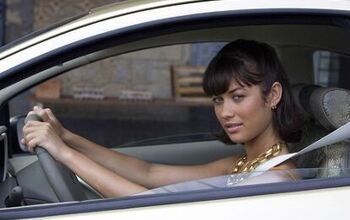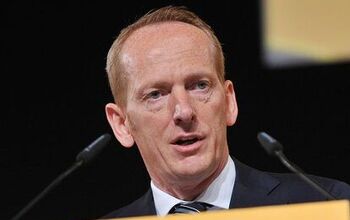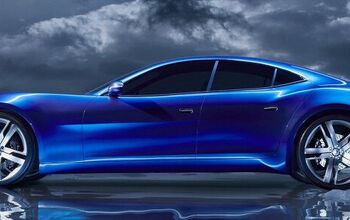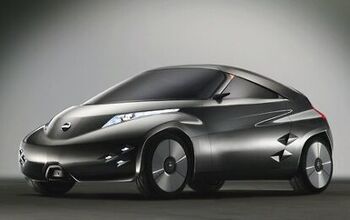Together in Electric Dreams
Chevrolet hopes their plug-in electric – gas powered Volt will become America’s sweetheart. Yet GM’s boldly going where the fully electric vehicle (EV) has gone before. Forget the EV-1. I’m referring to the Baker Electric of 1899. Thomas Edison’s first car (as an owner) was a commercial success, with an effective range of around 100 miles. Today's prototypes, upon which manufacturers are presently lavishing hundreds of millions of dollars, can double that. So what’s the big deal?
The big deal: mass producing a comfortable, affordable electric vehicle (EV) that meets current safety standards, with sufficient performance, durability, driving range and recharge times to make it a viable alternative to existing, highly-developed gas or gas-electric powered alternatives. And that’s without considering recharging logistics.
Simply put, Americans depend on their cars to do too much to depend on current EVs. Even using the latest Lithium-Ion battery technology, electric cars work best for short commutes and errand runs in sleepy suburbs. Unless you can plug-in and recharge at a gas station in ten minutes, the average American owner will have to stash the EV on the weekend and break out the “real car.” Without credible highway capability and/or a quick recharge option, buyers with only enough money for one car will be making a petroleum decision.
Yes, the auto industry’s best and brightest are on the case. Still, absent some miracle battery or materials breakthrough, it will be a long time before America sings the car body electric.
Of all the challenges obscuring America’s electric car future, safety is the biggest stumbling block. Simple physics tells us that the EV’s enemy is weight. Build a tiny EV out of balsa wood and the range issue disappears. Meanwhile, here in the real world, feather light, safe, mid-sized, mass-produced and affordable doesn’t compute.
To wit: the Tesla Roadster is a relatively minuscule, hugely expensive, light weight (carbon fiber) automobile with zero luggage space– and it still struggles to travel 200 miles on a single charge. Even with bleeding edge battery technology, a mass-produced (steel-bodied) mid-size car equipped with the requisite safety structures and devices (i.e. without Tesla’s airbag waiver) doesn’t stand a chance of matching a gas-powered car’s range or convenience. However, remove that barrier…
And you’re in the developing world, where safety takes a back seat to… everything. Which is why the development of the mass-produced EV will occur off-shore.
India’s Tata Motors recently unveiled the revolutionary $2500 Tata Nano. When Tata unveiled their "people's car," they claimed the machine passed frontal and side impact tests– without specifying whose tests they passed. It’s highly unlikely the Nano could meet American or European safety standards. More to the point, Tata immediately announced plans to build an electric Nano.
Ask any golf cart owner; cheap, small and light are the foundations for a successful EV. The Nano will make a perfect EV. It's small and light, thanks to a cardboard front axle and door panels made from ice chips. The machine’s target market isn’t overly-concerned with airbags, cupholders, leg room, highway cruising speeds or huge cruising distances. It's all about purchase price and operating costs.
At the same time, Israel has just announced that it’s partnered with Renault-Nissan to build electric cars. In smog-soaked Tel Aviv, electric cars will shift much of the city’s transportation energy needs to from petroleum to cleaner energy generation sources, like solar, wind, and nuclear power (in Israel’s case, not using petroleum has other political benefits, too). The government’s action guarantees the economies of scale that will make it worthwhile for Renault to test the EV waters. Equally important, the gov’s inclusion will assure the lowering of any safety-related regulatory hurdles.
Phase one of EV mass production will begin in India, Israel, Africa, China and other “developing” countries, where driving conditions are right, the safety requirements are less substantial, and the government is willing to interfere with the market to make it worth a manufacturer’s efforts. And speaking of governmental interference…
Gasoline production and distribution in the developing world tends to be incredibly inefficient, expensive and corrupt (e.g. Zimbabwe’s ongoing gas rationing crisis). If these countries use electric vehicles, their citizens can generate motive power any number of ways on the local level: solar, wind, coal, burning garbage, whatever. So why wouldn’t they “skip” right to electric powered vehicles, and enjoy the economic prosperity that mobility brings? While realpolitik argues against this kind of energy “democratization,” the possibility exists.
America will not be left on the EV sidelines. Once millions EV batteries are field tested, once manufacturers are churning-out large numbers of electric vehicles and their related components, the economies of scale will bring the cost down substantially– and spur more development. At some point, we’ll have our EV cake and put it in a large, comfortable, safe and practical automotive package, too.
Latest Car Reviews
Read moreLatest Product Reviews
Read moreRecent Comments
- Jeff Self driving cars are not ready for prime time.
- Lichtronamo Watch as the non-us based automakers shift more production to Mexico in the future.
- 28-Cars-Later " Electrek recently dug around in Tesla’s online parts catalog and found that the windshield costs a whopping $1,900 to replace.To be fair, that’s around what a Mercedes S-Class or Rivian windshield costs, but the Tesla’s glass is unique because of its shape. It’s also worth noting that most insurance plans have glass replacement options that can make the repair a low- or zero-cost issue. "Now I understand why my insurance is so high despite no claims for years and about 7,500 annual miles between three cars.
- AMcA My theory is that that when the Big 3 gave away the store to the UAW in the last contract, there was a side deal in which the UAW promised to go after the non-organized transplant plants. Even the UAW understands that if the wage differential gets too high it's gonna kill the golden goose.
- MKizzy Why else does range matter? Because in the EV advocate's dream scenario of a post-ICE future, the average multi-car household will find itself with more EVs in their garages and driveways than places to plug them in or the capacity to charge then all at once without significant electrical upgrades. Unless each vehicle has enough range to allow for multiple days without plugging in, fighting over charging access in multi-EV households will be right up there with finances for causes of domestic strife.

































Comments
Join the conversation
You know the comments here point out the problem with current hybrids, which are the real BS. An electric vehicle if small and light can be used for a large percentage if not all commutes. To do that it must be efficient. Which means its energy consumption in absolute terms vs. current auto's has to be pretty low. This is where I thought hybrids would go some 20 years ago. Imagine having a Tesla or similar with less performance at low cost and say 40 mile range. For those long trips, imagine you had a little one wheel trailer with a ten horse gas engine and small gas tank on it driving a generator. It now becomes possible to use this for any distance or purpose suitable for two people with little or no luggage. I thought serious hybrids would take this approach with detachable IC power sources or similar small sources built in. Maybe it only does 80 mph flat out. Then again, flat out with an IC engine is the most efficient use of that engine. I thought if it caught on maybe most people have an electric and could rent the add on power source for trips or for those with really long commutes. Lots of people rent cars for trips now so it isn't like this is highly improbable nor impractical. Renting easily attached power units for trips in a handful of standard configurations would be quite simple.
My commute is entirely in a 55mph or less zone. Sometimes that traffic is doing 65 or 70 but it is 5 lanes each way with lots of ramps so a car doing 55mph doesn't seem uncommon on the right side of the road. I'm more concerned about acceleration from a stop or acceleration from 40 mph to 65 mph than I am about top speed. If I had a hybrid or pure electric vehicle that was as big and safe as a traditional mid size car but couldn't do more than 80mph I'd be ok with that. I'd even consider it if the top speed were 70mph. I don't see top speed of 100mph+ as anything but marketing. The only time I've ever driven that fast on a divided interstate west of the Mississippi where there isn't an exit for something like 15 miles and the road is flat and straight. 99% of the roads in the US don't meet that criteria.